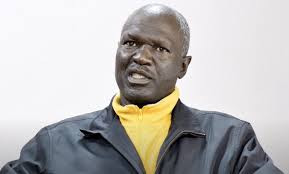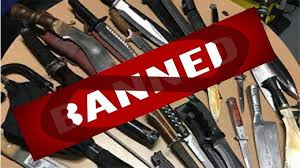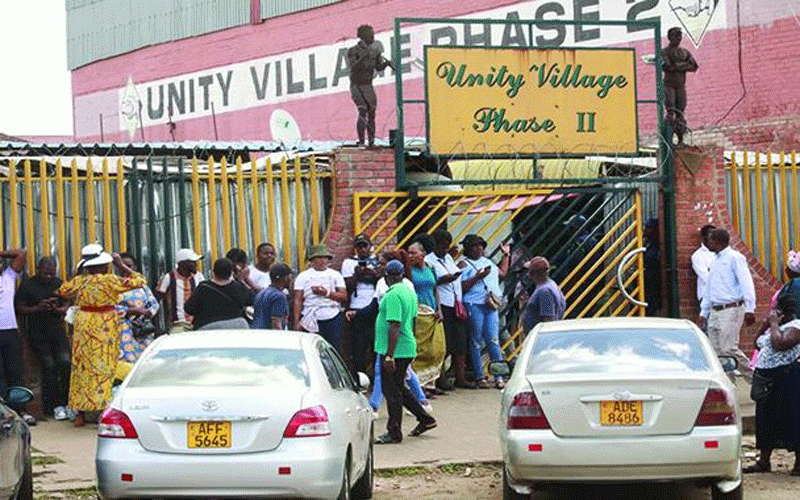Chipo Madzitire (70) appears frail, but spirited as she narrates how she has tried to look after her family after the death of her husband more than two decades ago.
It had not been a stroll in the park as she had to endure climate extremes that have pushed her and hordes of other families in Mwenezi into severe hunger and poverty.
Madzitire of Bhukuvhani village in Mwenezi district’s ward looks after several grandchildren, including four who recently who lost their father in mysterious circumstances.
“My husband died in 1998 because of HIV,” she said.
“I am also on medication, but it has been intricate.
“Getting food on the table was not that easy and the situation has been worsened by the drought.”
Keep Reading
- Firm Faith postpones album unveiling
- ZimNinja holds first ever Ninjutsu Grading
- COP26 a washout? Don’t lose hope – here’s why
- Out & about: Bright sheds light on Vic Falls Carnival
She said at some point she wanted to default in taking the antiretroviral medication.
Zimbabwe is facing its worst drought in 40 years amid a huge crop deficit after the majority of the crops were written off during the 2023/4 agriculture season.
Experts say drought is an ongoing and worsening trend in sub-Saharan Africa, with the percentage of land experiencing severe drought increasing from around 5% to 15% since 1901.
The drought poses an enormous risk to health outcomes for communities living with HIV in drought prone areas like Mwenezi.
According to UNAids, last year there were 1 189 793 adults aged 15 and above receiving antiretroviral treatment in Zimbabwe of which 750 674 were women aged 15 and over.
Standard People established that a number of people living with HIV in Mwenezi were unable to take their HIV medication due to hunger and limited access to clean water.
They are experiencing food insecurity as many families depend on agriculture for income and food.
Food insecurity has also been proven to lead to decreased access to antiretroviral, high viral load, drug resistance, and increased HIV transmission — all of which threaten to reverse the country’s gains made in the HIV and Aids response.
The situation in Mwenezi is dire and continues to worsen, especially for women and girls.
“Sometimes we spend the day without eating food, yet I have to eat to take these drugs,” Madzitire said.
“I have nothing; I have no goats and no chickens.
“These days we rely on shomhwe [amarula nuts] and we drink water.
“We are now waiting for hwakwa [wild fruit] to ripen.
“We haven’t received any food aid.”
Madzitire said her situation worsened after her son died.
“My son recently died at a gold panning site in Gwanda mysteriously,” she said.
“He left a wife and four grandchildren whom I am staying with.
“We are all widows and it’s difficult to look after all these grandchildren considering my condition.
Madzitire’s daughter-in-law, Beatrice Tizirai (32), who was crushing marula nuts, said she was finding it difficult to look after her family.
“My husband, who sometimes chipped in is not around and he left me pregnant,” Tizirai said.
“I am expecting my fifth child, but it has not been that rosy looking after these children.
“Sometimes they don’t go to school because of hunger.
“There are no supplementary feeding programmes at school.”
Tizirai said she was not sure if they had enough food for the day.
“Today, I don’t think we have enough food,” she said.
“We might cook porridge so that gogo is able to take her medication. I am crushing these marula nuts maybe for tomorrow morning.
“I also fear for the health of my unborn baby.”
According to the Zimbabwe Vulnerability Assessment Committee report released early this year, a large number of the rural population will not have enough cereal for consumption and need over 100 000 MT of maize grain during the peak period.
Fifty four-year-old Chipo Jani said she is in poor health and does not have the energy to fend for her family.
“My husband died and I am on HIV treatment,” Jani said.
“This woman here is a relative, who brought me a plate of mealie-meal after I raised the alarm that all was not well.
“We are dying and these children you see sleeping here are my grandchildren.
“They are sleeping because they are hungry.
“We eat once a day, we have eaten already and we are likely to skip in the evening to save the little mealie-meal for tomorrow.
“For now, we can have the nuts, drink water and sleep. “
Jani said if she had enough food, she would be able to take part in community programmes.
“I can’t join others at community gardens or I can’t dig the holes for pfumvudza because I am frail,” she said.
“There is no water in Mahwi River, so we have to dig in the sand to get the water for drinking and watering gardens.”
Bester Sidhava (74) who can’t remember when her husband died, said they had to forego some meals.
“I don’t have enough food to eat,” Sidhava said.
“I gave birth to 11 children, but the majority of them died.
“I stay with these two granddaughters.
“It’s difficult for me considering my age and condition.”
Patience Makuya (37) from Chaparapata village 7A in Ward 14 said hunger triggers behavioural changes as people struggle to battle poverty and food insecurity through activities such as transactional sex.
“Hunger can push women and girls into risky sexual behaviours and this is happening in communities,” Makuya said.
“Such behaviour puts women at risk of HIV and sexually transmitted infections.
“There is also an element of gender-based violence in such situations. When there is hunger, we tend to fight in the house.”
According to the World Bank, girls and women who live in extreme poverty, in remote areas or who are marginalised continue to lag behind their male counterparts.
“Women are vulnerable to extreme poverty because they face a greater burden of unpaid work and have limited access to productive assets,” said Musa Gumbo, a Zimbabwe Red Cross Society (ZRCS) volunteer based in Mwenezi.
“Women are exposed to STIs and HIV in extreme situations like drought and floods.
“There is a lot of GBV as well as people can’t cope with hunger.”
Extreme poverty of women seems to interrelate strongly with infectious diseases, according to Gumbo.
The World Health Organisation says young women aged 15 to 24 are three times more likely to be infected with HIV than their male counterparts and comprise 31% of all new HIV infections in Sub-Saharan Africa.
Abigail Muzoregora, ward 14 development coordinator in the Women Affairs ministry said women bear the brunt of drought and extreme weather conditions.
“Women carry the burden of droughts and climate change,” Mazoregora said.
“They end up going an extra mile to fend for their families with some ending up engaging in risky sexual behaviours.
“In families where there is hunger there is always violence and it is the woman who is on the receiving end.
“All these scenarios put women at the risk of contracting infectious diseases.
“I think there is a need to convene gender sensitisation workshops to raise awareness in communities.”
Muzoregora appealed for programmes that facilitate the establishment of community banks, nutritional gardens and improve access of water in communities.
She said while her ministry was helping in some way, the resources were limited.
Mwenezi assistant district development coordinator Martin Vunganai conceded that drought was taking a toll on communities in the district.
“You will realise that our drought situation is different from other regions considering that we are in regions four and five, which experience fairly low rainfall and are subject to periodic seasonal droughts,” Vunganai said.
“According to the recent ZimVac report, we are around 47% in terms of food insecurity.
“We have had partners that have come to help us in drilling boreholes but in most cases we hit dry holes.
“As a district we rely on one river, which is Mwenezi, which feeds from Manyuchi Dam and that’s where most people and livestock get the water.
“We end up having boreholes where people and livestock compete for water.”
Vunganai said the panacea was to have partners that help communities establish weir dams to address the water situation and improve food security.
ZRCS secretary-general Elias Hwenga said his organisation was engaging communities in Binga, Mwenezi and Gokwe South districts as part of a needs assessment exercise in the face of the El Nino-induced drought.
The programme is being supported by the International Federation of Red Cross.
“The project focuses on in-depth qualitative data gathering from community members, community leaders, volunteers and key informants from the respective districts,” Hwenga said.
He said this was being done following the declaration of a state of disaster after the rainfall patterns that were observed during the 2023/24 rainfall season which were significantly affected by the El Nino conditions that dominated the rainfall season.
Of late, Mwenezi has been one of the districts most affected by climate change, with increasing risks of drought caused by changes in precipitation and limited water storage. The ZRCS has been implementing a Hunger Crisis Response project in three wards of Mwenezi district, which was anchored on three pillars — water, sanitation and hygiene, food security and livelihoods as well as food and nutrition.
A recent WHO report supporting the negotiations of the UN Framework Convention on Climate Change recognised that climate change affects human health both directly and indirectly.
The report notes an estimated close to 13 million deaths — about 23% of all global deaths — linked to modifiable environmental factors, often related to climate change.





